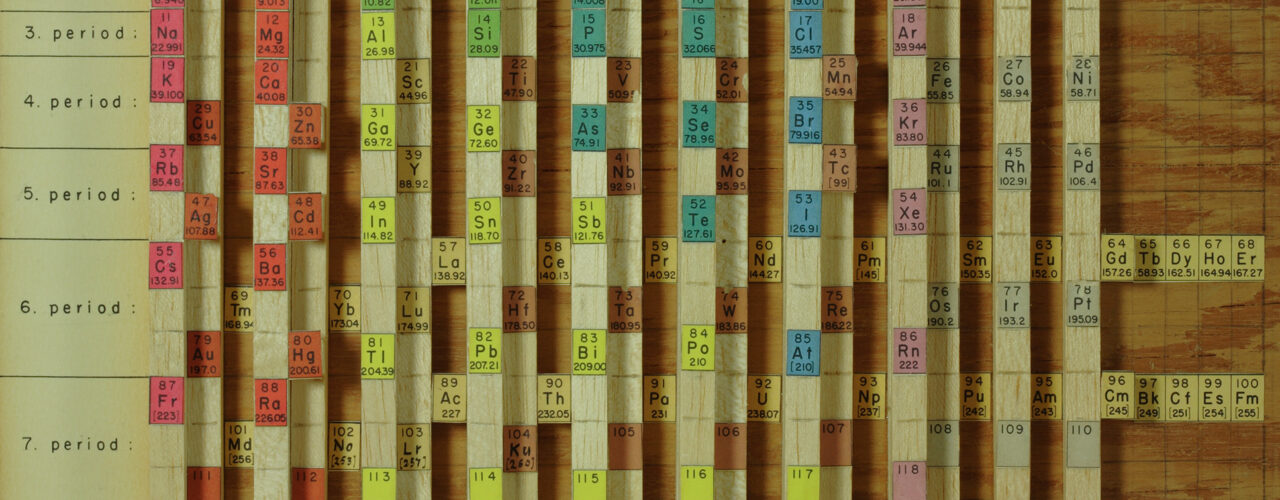
New York Times: Is It Time to Upend the Periodic Table?
The Institute’s Brigitte Van Tiggelen is quoted in this article on Mendeleev’s chart and the variations proposed in the 150 years since.
Brigitte Van Tiggelen, a chemistry historian at the Science History Institute in Philadelphia, discussed the work of Ida Noddack, a German chemist who discovered rhenium, and Lise Meitner, an Austrian-Swedish physicist who, with Otto Hahn, discovered protactinium. Dr. Van Tiggelen is an editor of a new book, Women in Their Element, that explores more than 30 similar stories, including, of course, that of Marie Curie, who discovered two elements, radium and polonium, and twice won the Nobel Prize.
“We present the story as a communal enterprise,” Dr. Van Tiggelen said.
Read more in the New York Times >>
Above: 3-D wooden periodic table model designed by Edward G. Mazurs, ca. 1974. Science History Institute.
More News
Explore the History of Science on the School Food Tray with Institute’s New ‘Lunchtime’ Exhibition Opening September 27
Visitors will uncover the surprising story behind the school lunch.
Science History Institute Hosts 2024 Gordon Cain Conference
“Storytelling as Pedagogy” program explored using scientific biographies in the classroom and beyond.
Science History Institute Welcomes 2024–2025 Beckman Center Fellows
Our scholars study a wide range of topics in the history and social studies of chemistry, chemical engineering, and the life sciences.



